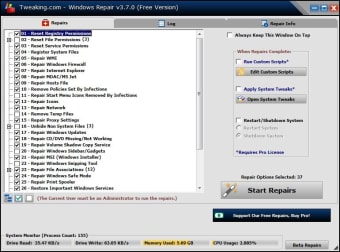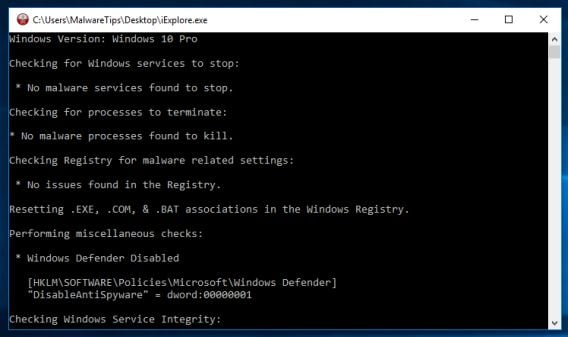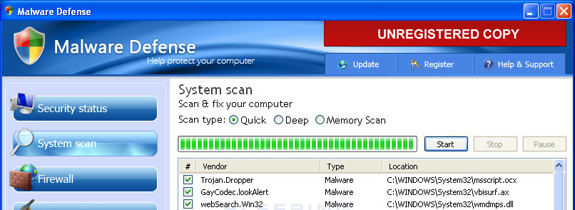File TypeWindows Shortcut
LNK files are usually seen by users as shortcuts, and used in places like the Desktop and Start Menu. LNK was actually already used as an attack vector as early as 2013. And in early 2017, we noted how Trojan downloaders used a.zip within a.zip to disguise a LNK file attachment that led to the Locky ransomware. For simplicity, Unassoc is almost foolproof and performs the simple task of listing which. 1 Click/tap on the link of the file type or protocol in the table below that you would like to restore the default associations of to download it's.reg file. 2 Save the.reg file to your desktop. 3 Double click/tap on the downloaded.reg file to merge it. 4 When prompted, click/tap on Run, Yes (UAC), Yes, and OK to approve the merge. I have come to suffer from a.lnk malfuction. Without realizing I used 'open with' to tell my windows that I wanted all my.lnk files to be opened through the computer game Sacred2. I have searched various places for solutions and have seen most of the suggestions. Running a.reg file with regedit corrections didn't help.

| Developer | Microsoft |
| Popularity | |
| Category | System Files |
| Format | Binary |
What is an LNK file?
An LNK file is a shortcut or 'link' used by Windows as a reference to an original file, folder, or application similar to an alias on the Macintosh platform. It contains the shortcut target type, location, and filename as well as the program that opens the target file and an optional shortcut key. The file can be created in Windows by right-clicking a file, folder, or executable program and then selecting Create shortcut.
LNK files typically use the same icon as their target file, but add a small curled arrow to indicate that the file points to another location. When double-clicked, the shortcut acts exactly the same way as if the user clicked the original file.
LNK files with shortcuts to a program (.EXE file) can specify attributes for how the program runs. To set the attributes, right-click the shortcut file, select 'Properties,' and modify the Target field.
Windows do not display the .lnk file extension for file shortcuts even when the 'Hide extensions for known file types' folder viewing property is unchecked. While not recommended, you may enable the file extension to be displayed by deleting the 'NeverShowExt' property within the HKEY_CLASSES_ROOTlnkfile Windows registry entry. To do so, follow these instructions:
- Open 'Registry Editor' by typing 'regedit' in the taskbar search box and selecting the program.
- Navigate to the ComputerHKEY_CLASSES_ROOTlnkfile location in the program.
- Create a backup of the key by right-clicking 'lnkfile' and selecting Export (you can use this to restore your key in case of an error).
- Select the 'NeverShowExt' property and delete it.
- Restart Windows.
Read more about Windows shortcuts in the FileInfo.com Help Center.
NOTE: Changes to the LNK file association may cause your Windows desktop icons to unexpectedly change or disappear. You can visit the Help Center for instructions on how to fix your Windows icons.
Open over 300 file formats with File Viewer Plus.Programs that open LNK files
Your computer is always opening different types of files, whether they are images, music, text files, archives, documents, or executables. Each type of file in Windows needs to be told what it is so the appropriate action can be taken and the file can be opened or launched. The file extension, which is whatever text comes after the last period (.) in a filename tells the system what it is and what should be done with the file.
By default, Windows has dozens of types of file extension associated with specific actions so they can be recognized on double click. For instance, EXE launches the file as an executable whereas TXT opens the file in Notepad or REG tells Windows the file is a Registry Editor file. As you add more and more software to your system more file type extensions are added to handle the files required by the software.
It’s quite easy to associate a file not recognized by Windows to a specific file format. All you have to do is right click, select Open with and choose the program you want to open it. However, it’s more difficult to do the opposite and remove a known association from a file so it doesn’t launch or open in any program when double-clicked.
Although it’s easily possible to change the association in Windows Control Panel or Settings from one file type to another, it’s not possible to remove the association entirely. Here we show you some ways to remove file extension associations in Windows.1. Types
Types is quite an easy program to use and it has one major advantage over the other third party tools here. It’s the only program we tested that can fully remove a file extension association in Windows 10. The others will be able to delete more basic associations or delete all associations in Windows 7. If you have issues with your file extension not clearing itself in Windows 10, try this.
Although Types can change file associations, context menus, and icons, you don’t really need to use those options for a simple extension delete. Types can both delete the extension or just remove the file type association.
a) Completely removing a file extension is simply a case of launching the Types program and finding the file extension in the window. Click the Delete button or press Del on the keyboard.
b) This option is if you just want to remove the file type association but leave the extension present on the system. To do that, instead of pressing Delete, select Properties (or double-click). Uncheck the Class box to remove the file type from the extension.
There are portable, command line, and installer versions of Types available, portable and CLI are at the bottom of the webpage in small text. The installer can add an entry into Control Panel for easy access. Windows 10 users will need .NET Framework 3.5 installed on their computer (it’s offered during install or launch).
Download Types
2. FileTypesMan
Nirsoft’s FileTypesMan is a small management tool to edit files types and extensions. It’s portable and only about 170KB with options to create new extensions, replace file types, save a report, and delete selected extensions, including deleting several at once if you choose.
a) To delete an extension, run FileTypesMan, find and highlight the required extension in the window, and press Ctrl+Del or go to Edit > Delete Selected Extensions. Multiple removals at once are possible with the use of Ctrl and Shift.
b) The other option is removing the association to the file extension while leaving the extension present on the system. Right click on the extension and select Replace File Type For Selected Extension or press F4. Then press the Detach File Type button at the bottom.
If the extension is still associated, you might have previously set it to manually open with another program. This association is stored separately and needs to be manually cleared. Double click on the extension and click in the box for “User Choice”. Press Del to delete the entry so the box is empty. Press OK and ignore any Access Denied error that might appear.
Note that if you have already deleted the extension using option a, you won’t be able to try option b because there is no extension to select. With FileTypesMan, it’s probably best to try removing the association first and using the delete extension option second.
Download FileTypesMan
3. Default Programs Editor
Default Programs Editor can be installed to Control Panel and used as a better version of the file type, autoplay, and default programs settings in Windows. It can also backup and restore settings, edit the context menus for file types, change file type icons, edit the name of a file type, and edit the Open with menu contents.
A file type association can be removed either by deleting the file extension entirely or leaving it there but changing its file type association to unknown. The end result is the same and a file with the extension shouldn’t be opened by anything.

a) To delete the file extension from the system launch Default Programs Editor, go to File Type Settings and click Delete an extension at the bottom right. Click on the extension in the list and press Delete Extension.
b) To remove the file type association but keep the extension, go to File Type Settings and click Change an extension’s file type at the bottom. Akrong series elective mathematics pdf downloadable. Click on the extension in the list and press Next. In the new file type list, select Unknown and press Save File Type.
If you click on the save or delete button drop down there is another option to save the action to a REG file. This is useful because you can use it to quickly remove an extension association on any system. Default Programs Editor is portable and the option to integrate into Control Panel is in Settings. Windows 10 requires the .NET Framework 3.5 optional feature installed.

Download Default Programs Editor
4. Unassoc
For simplicity, Unassoc is almost foolproof and performs the simple task of listing which file extensions are present on the system and lets them be deleted. The program is portable and under 100KB in size. The biggest problem is it’s been hardcoded to only work on Windows Vista and 7 systems so won’t work on Windows 8 or 10. Sadly, the source code is not available to correct a potentially easy fix.
Usage is simply a case of selecting the file extension in the list and pressing Delete file type to remove the association. The grayed out button will remove the association if it’s only present in the current user profile. Most normal extensions are system wide as well so will not make the button clickable.
Download Unassoc
There are methods to remove a file extension association on page two that don’t require third party software.
12Next › View All You might also like:
5 Ways to Fix or Restore Broken .EXE .LNK .COM Association Caused by Virus3 Methods to Spoof Fake File Extensions in WindowsSafest Method to Replace Notepad with Notepad++ in Windows6 Ways To Help Identify Unrecognized or Unknown File Types6 Ways To Remove Unused Icons from the Notification AreaCommand Prompt always saves your day!
ReplyI tried no.7 and no.6 on windows 10, didnt look like working until I restarted the computer – seems the associated program’s icon will keep showing before you restart.
ReplyWow, you did great,No. 6 worked like a charm (I’m a Windows 10 user). I’ve spent the last 2 hours looking this up everywhere online, that might sound small but it was especially frustrating because for something as unassuming as Notepad, I didn’t expect to spend such large chunk of m day lol. Thank you, Raymond
ReplyWhat a great find, Raymond. I appreciate the Command method even more.
Thanks!
This is a great little program and also solves a really irritating problem – making a inadvertant mistake when using the “Open With” option.

Thanks
ReplyThanks for the head up. I once encounter this problem when XP auto associate a file type for me. This should come in handy in case the problem occur again.
Reply.lnk File Association Windows 10
Leave a Reply
